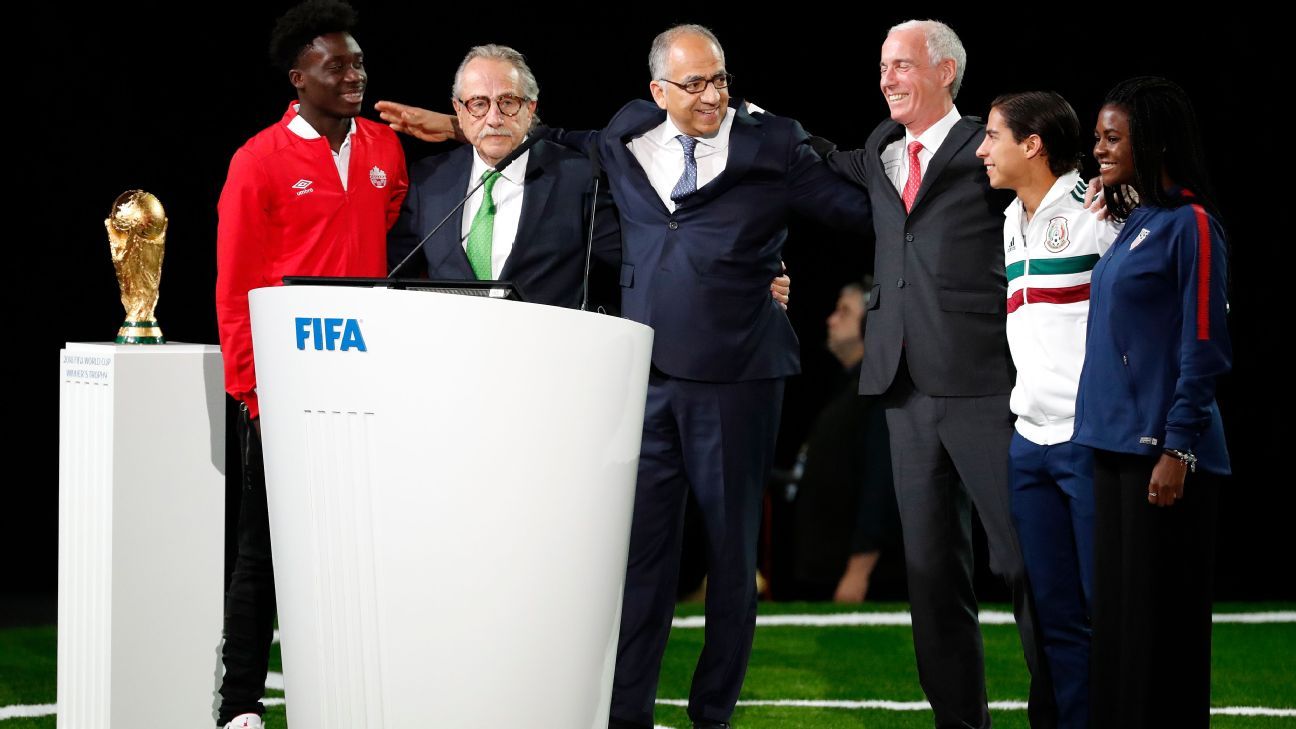Products You May Like
FIFA has announced the 16 North American cities that will host matches for the 2026 World Cup, with 11 venues chosen in the United States, three in Mexico and two in Canada.
The 2026 World Cup will be the first tournament hosted by three nations and also the first that will expand to 48 teams in the competition.
– World Cup 2026: What you need to know about the 16 venues
– Don’t have ESPN? Get instant access
The cities officially selected to host World Cup matches in the U.S. are: New York/New Jersey (MetLife Stadium), Los Angeles (SoFi Stadium), Dallas (AT&T Stadium), San Francisco Bay Area (Levi’s Stadium), Miami (Hard Rock Stadium), Atlanta (Mercedes-Benz Stadium), Seattle (Lumen Field), Houston (NRG Stadium), Philadelphia (Lincoln Financial Field), Kansas City (Arrowhead Stadium) and Boston (Gillette Stadium).
The host of the 1994 World Cup final, the Rose Bowl, was not chosen, with Los Angeles’ other venue, SoFi Stadium, being chosen instead.
The cities officially selected to host World Cup matches in Mexico and Canada are: Guadalajara (Estadio Akron), Monterrey (Estadio BBVA Bancomer), Mexico City (Estadio Azteca), Toronto (BMO Field) and Vancouver (BC Place).
The following candidates missed out on selection: Baltimore/Washington D.C. (M&T Bank Stadium), Orlando (Camping World Stadium), Cincinnati (Paul Brown Stadium), Nashville (Nissan Stadium), Denver (Empower Field at Mile High) and Edmonton (Commonwealth Stadium).
From the original “United 2026” bid from the three nations, 60 games are set to be played in the United States, while Mexico and Canada will each get 10 matches. Once the tournament reaches the quarterfinal stage, all remaining knockout round games will be held in the U.S.
Originally starting with candidates from 44 cities and 49 stadiums across North America, the process to select venues began in 2017. Potential applicants were asked to “provide information about each city’s transportation infrastructure, past experience hosting major sporting and cultural events, available accommodations, environmental protection initiatives, potential venues and more,” which also included possible training sites, base camps and other considerations.
By March of 2018, just a few months before the United 2026 bid were officially given the rights by FIFA to host the 2026 World Cup, the list of North American candidates was narrowed down to 23. Not making the list were areas like Chicago, Minneapolis and Arizona, due to what city officials described as issues with FIFA’s financial demands.
Other noteworthy cities left out of the 23-venue list from 2018 were Charlotte, Detroit, Las Vegas, Salt Lake City and Tampa. Vancouver, initially out of the running after disagreements over financing, eventually replaced Montreal after they dropped out in 2021 when the provincial government withdrew its support.
A FIFA delegation, led by CONCACAF president and FIFA vice-president Victor Montagliani, conducted visits of all candidate host cities at the end of 2021.
The joint bid between Baltimore and Washington D.C. at M&T Bank Stadium was announced this April after FedEx Field in Landover, Maryland, dropped out of the running and opted to merge with the Baltimore bid. Under the proposal, there would have been a fan festival on D.C.’s National Mall.
With the Rose Bowl not selected, none of the U.S. venues from the 1994 men’s World Cup will be utilized for the 2026 edition of the tournament.
Mexico City’s Estadio Azteca, which hosted the 1970 and 1986 World Cup finals, will be the first stadium to host three men’s World Cups. Mexico will also be the first nation to either host or co-host three men’s World Cups.
